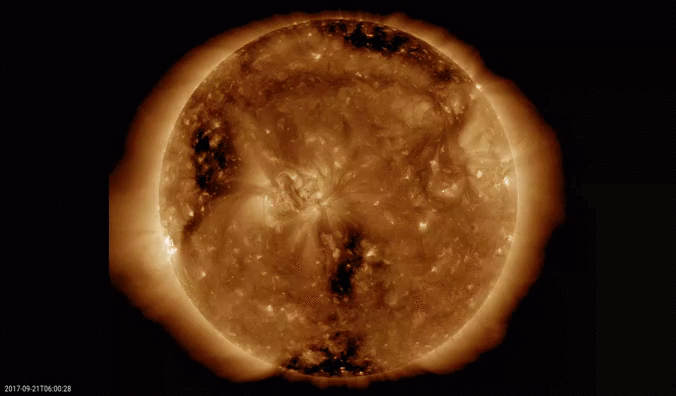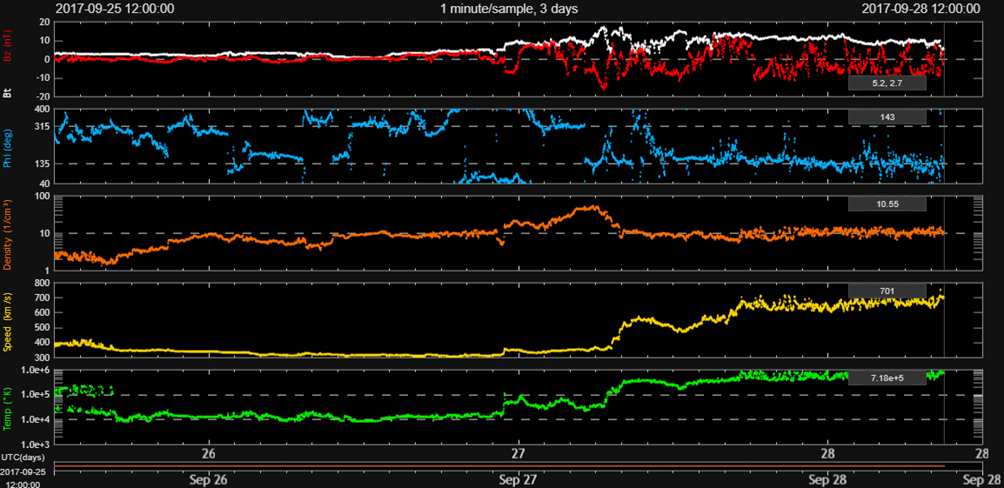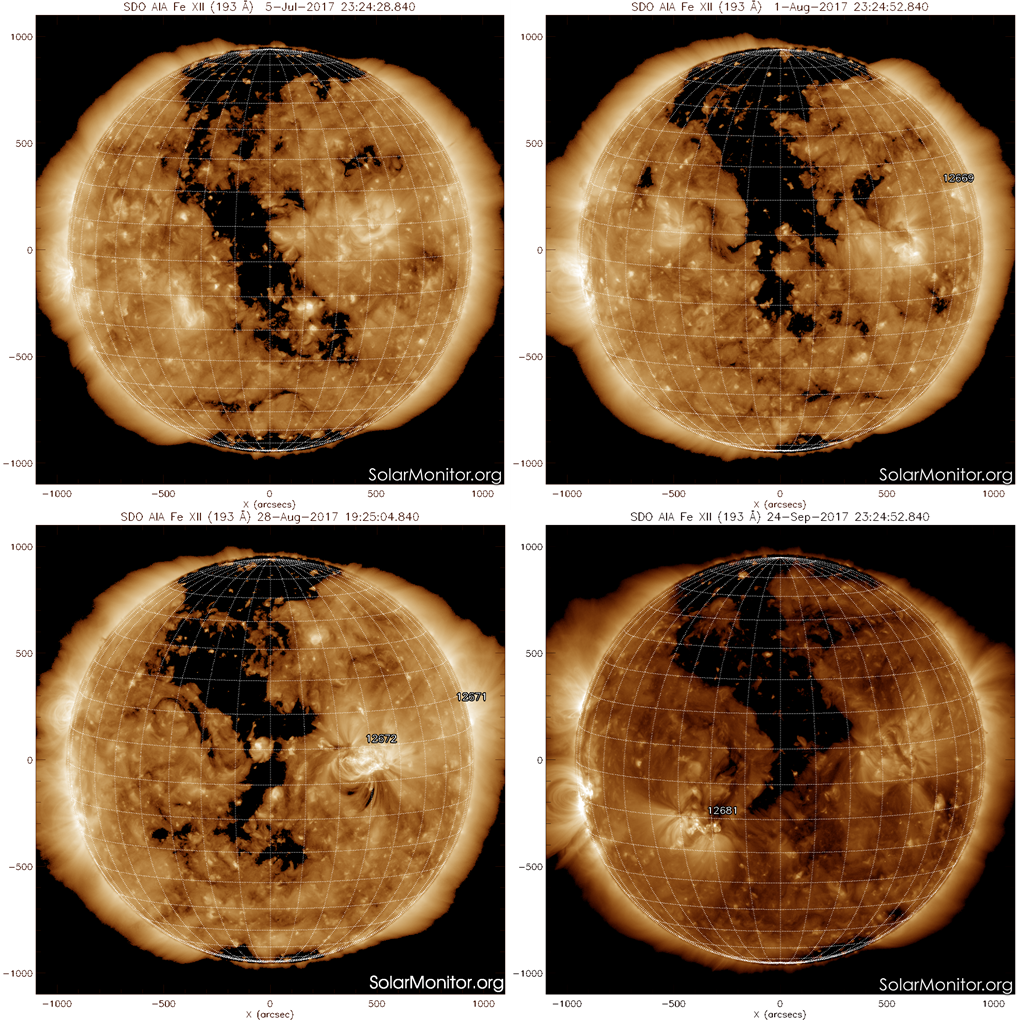Earth is currently under the influence of the high speed stream (HSS) associated with the extension of the northern polar coronal hole (CH). This trans-equatorial CH transited the Sun's Central Meridian around 24 September (see SDO image underneath). The associated particle stream arrived at Earth late on 26 September, with wind speeds picking up on 27 September and reaching peak values around 710 km/s and Bz at -17 nT (DSCOVR). See resp. the yellow and red curves in the DSCOVR graph underneath. As a result, global geomagnetic indices indicate a strong geomagnetic storm is in progress (Kp = 7 - See this news item for more info on this index). Locally, K Dourbes is at minor storming conditions. With the storm still in progress, further geomagnetic storming episodes are expected over the next few days.


This is already the 4th transit of this CH over the solar disk. It started to develop early June, and crossed the Central Meridian (CM) on resp. 5 July, 1 August, 28 August and 24 September. See the SDO imagery (extreme ultraviolet) underneath. It has a positive magnetic field, meaning that the magnetic field lines are directed away from the Sun.

The table underneath summarizes the main features of the HSS during the previous passages. First column gives the passage over the CM, then the estimated arrival time of the particle stream at Earth, the approximate peak in solar wind speed (km/s) and vertical component of the magnetic field (Bz; in nT). For comparison, the undisturbed solar wind values are resp. about 400 km/s and between +3 and -3 nT.
During the previous passages, the geomagnetic effects were limited to brief episodes of minor geomagnetic storming (Kp), with Dst (Storm Time Disturbance index) barely reaching -50 nT. This time however, the influence is much more intense, with Kp reaching 7 and Dst already at -100 nT and further decreasing as the geomagnetic storm unfolds. Once again, it shows that the Earth environment is more vulnerable to solar wind disturbances during spring and autumn, the so-called Russell-McPherron effect. If the CH survives another solar rotation, then we may be in for more strong geomagnetic storming next month.






